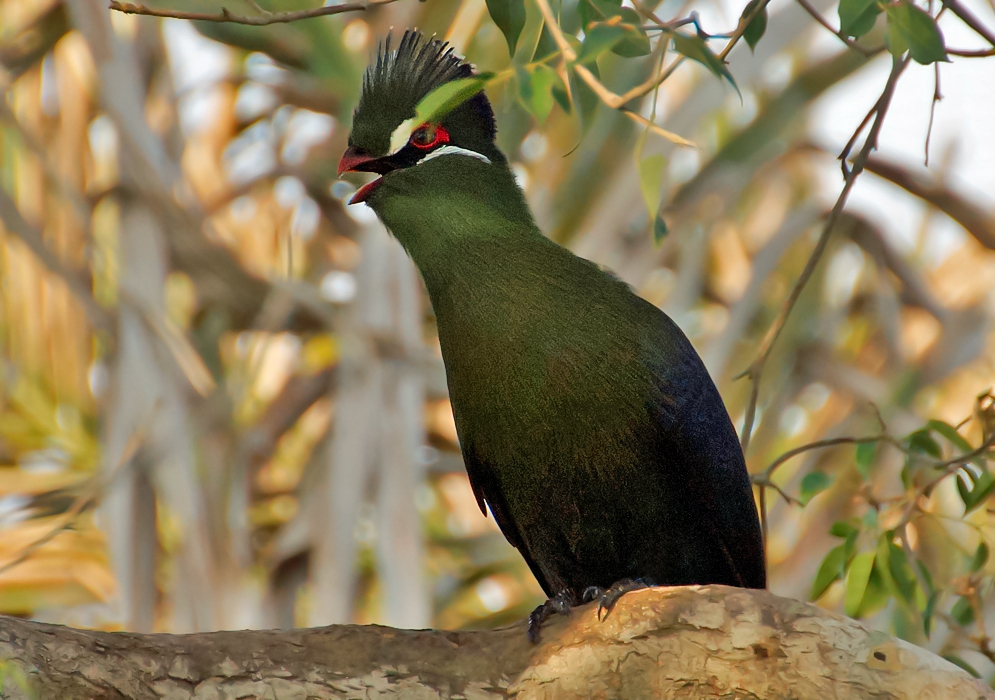This post has 11 Simple Fields-fields attached. Show fields.

The blue-crowned motmot, is native to Central and South America, with its range extending from northeastern Mexico to northwestern Peru, Paraguay, Bolivia, Trinidad, and northern Argentina. This species adapts to various environments, including Pacific lowlands with severe dry seasons, deforested highland areas, coffee plantations, and urban settings such as gardens and wooded ravines. The blue-crowned motmot exhibits a striking appearance. Males measure approximately 16 inches in length, with females being slightly smaller. Both sexes share similar plumage, characterized by a black crown bordered by a wide band of blue covering most of the forehead. Their back and upper tail feathers range from olive-green to parrot-green, and their wings are a brighter green with bluish-green primaries. A distinctive feature is their racket-shaped tail feathers, which are greenish near the end and bluer near the tip. These birds also have a broad, heavy black bill with coarse serrations, dull red eyes, and grey legs and feet. Interestingly, in northeastern Mexico, there is a variant (M. momota coeruliceps) with an entirely blue crown. Each bird weighs around 3.59 ounces. Reproduction in this species begins months in advance during the rainy season. They select less obvious sites for their burrows to evade predators. The motmots prefer to start their tunnels from the side of pits or hollows in the ground, finding advantages in the soft, easily worked soil, and in making their burrow look old and inconspicuous by the time egg laying begins. Eggs are laid between March and April in South American regions and between May and June in Mexico. Both sexes partake in incubating the eggs, which usually lasts from 13 days to about three weeks.The blue-crowned motmot displays unique behaviors. They live in pairs year-round but often forage separately during the day, making it less apparent that they are mated. These birds are active during twilight and rest later than most birds, choosing to sleep amid foliage rather than in their burrows. Their flight is described as sudden, swift, and direct, but not typically sustained over long distances. The blue-crowned motmot is largely insectivorous but also consumes fruits. Beetles, particularly dung beetles, form a significant part of their diet. They also feed on large cicadas, stick-insects, orthopterans, various larvae, spiders, and occasionally small lizards. The motmot employs two methods of handling prey: either beating it against a perch until it becomes inactive or dealing with it on the ground. They are also known to forage alongside swarms of army ants to catch other insects, spiders, and lizards. The blue-crowned motmot is classified as of "Least Concern" on the IUCN Red List. This species is the only one among the eight species in the family Momotidae capable of reproducing in captivity.

